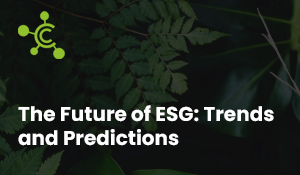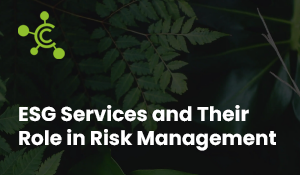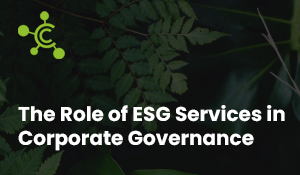In the face of a climate emergency, recognizing environmental and social risks is paramount for informed investment decisions. ESG criteria now play a crucial role in risk management, not only enabling organisations to contribute positively to the world but also demonstrating tangible benefits for the organisation itself through robust ESG reporting.
We talked about some of the best ESG practices when building up your ESG strategy among which were assembling an ESG team of experts or hiring a consultancy equipped with the best people in the industry and aligning your company with regulatory frameworks.
In this weeks blog we will focus on the remaining tips and tricks.
Embrace advanced software solutions to seamlessly aggregate and monitor ESG data from diverse sources. The cornerstone of any robust ESG narrative lies in data integrity. However, for organizations, ensuring the quality of this data poses a significant challenge, particularly amidst the complexities of extensive corporate networks involving subsidiaries, partners, and suppliers. Nevertheless, responding to the demands of stakeholders—ranging from investors to consumers—for reliable and transparent ESG insights compels companies to invest in sustainable software solutions. Such investments not only offer comprehensive data analysis capabilities but also mitigate the risks of inadvertent errors and uphold the integrity of their environmental and social commitments.
Transparency is key . Transparency stands as a fundamental pillar of a good ESG strategy, underpinning data credibility, authenticity, and relevance. Cultivate trust and credibility by proactively engaging stakeholders in transparent dialogues about your progress, encompassing both achievements and challenges. In today’s discerning landscape, stakeholders prioritize factual insights over grandiose promises. To enhance transparency across ESG initiatives, businesses can implement strategies such as:
- Supply chain visibility and traceability: Articulate the intricacies of the supply chain, ensuring transparency across all tiers.
- Data visualization: Communicate data externally, emphasizing its real-time nature, precision, and reliability.
- Simplified communication: Utilize visual aids such as tables, graphs, and diagrams to convey performance metrics effectively, ensuring accessibility and comprehension, particularly for esteemed clientele.
Find out what is the best way to build your ESG strategy by joining our ESG Webinar on May 16th!
Click here to register.




